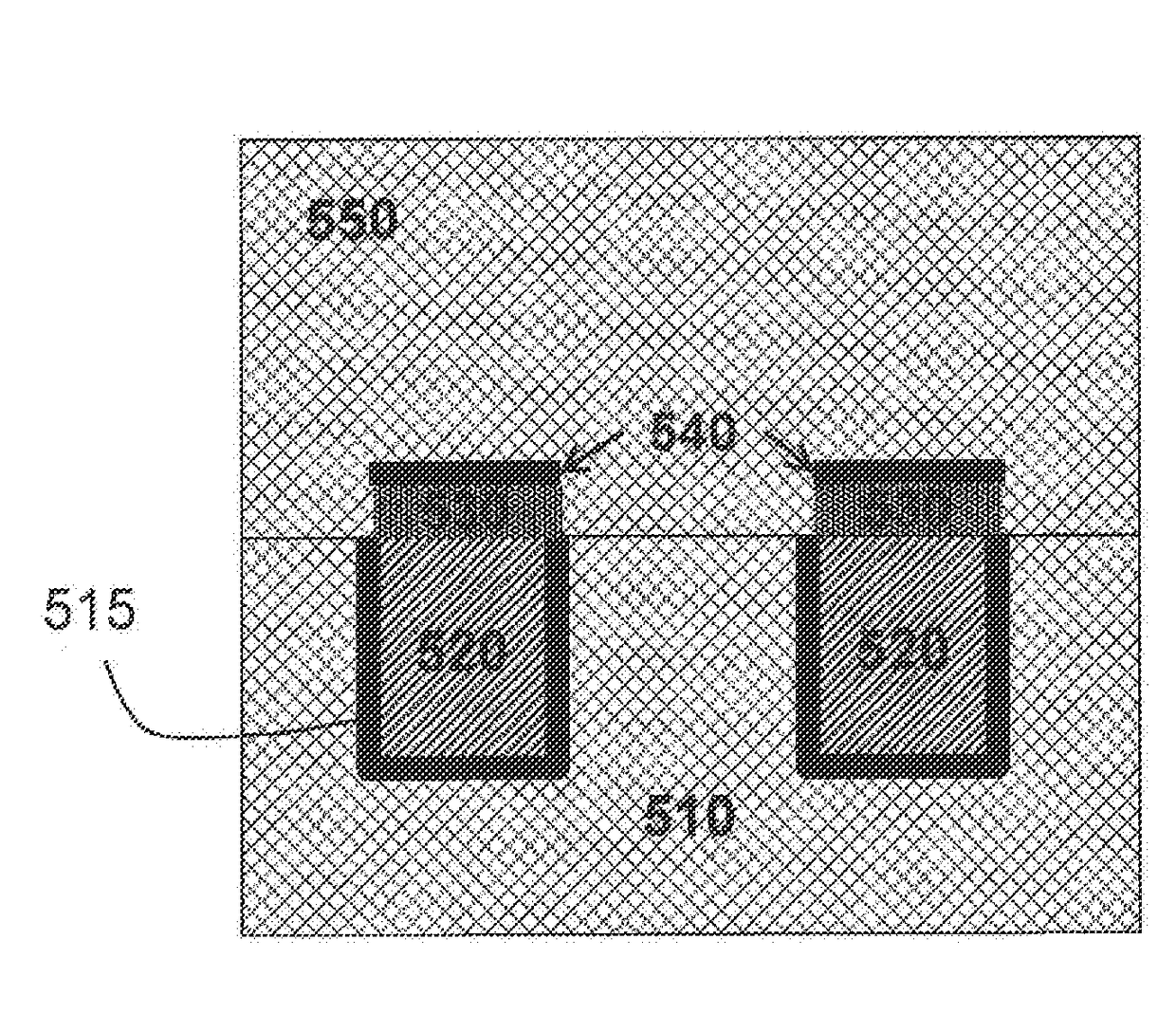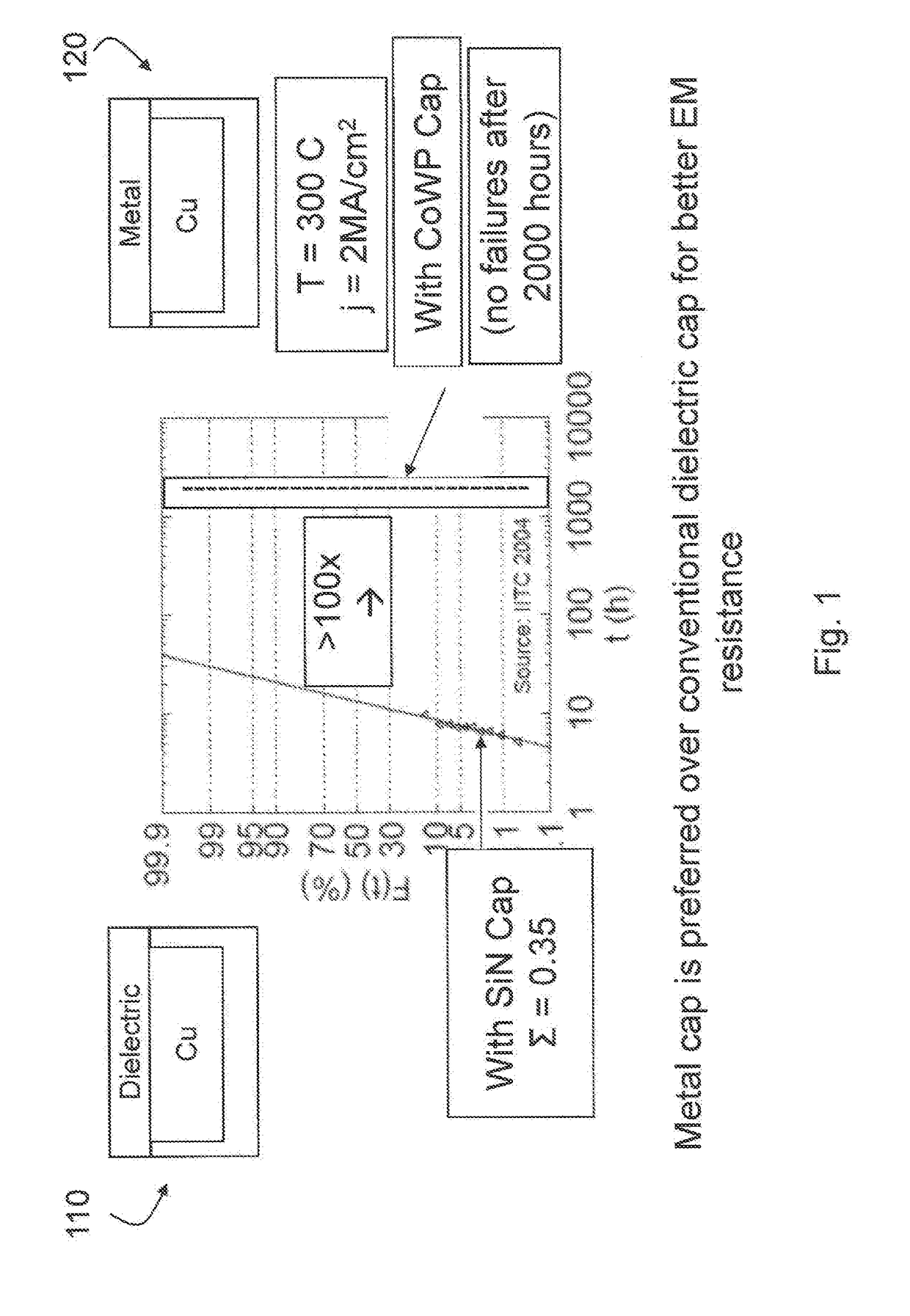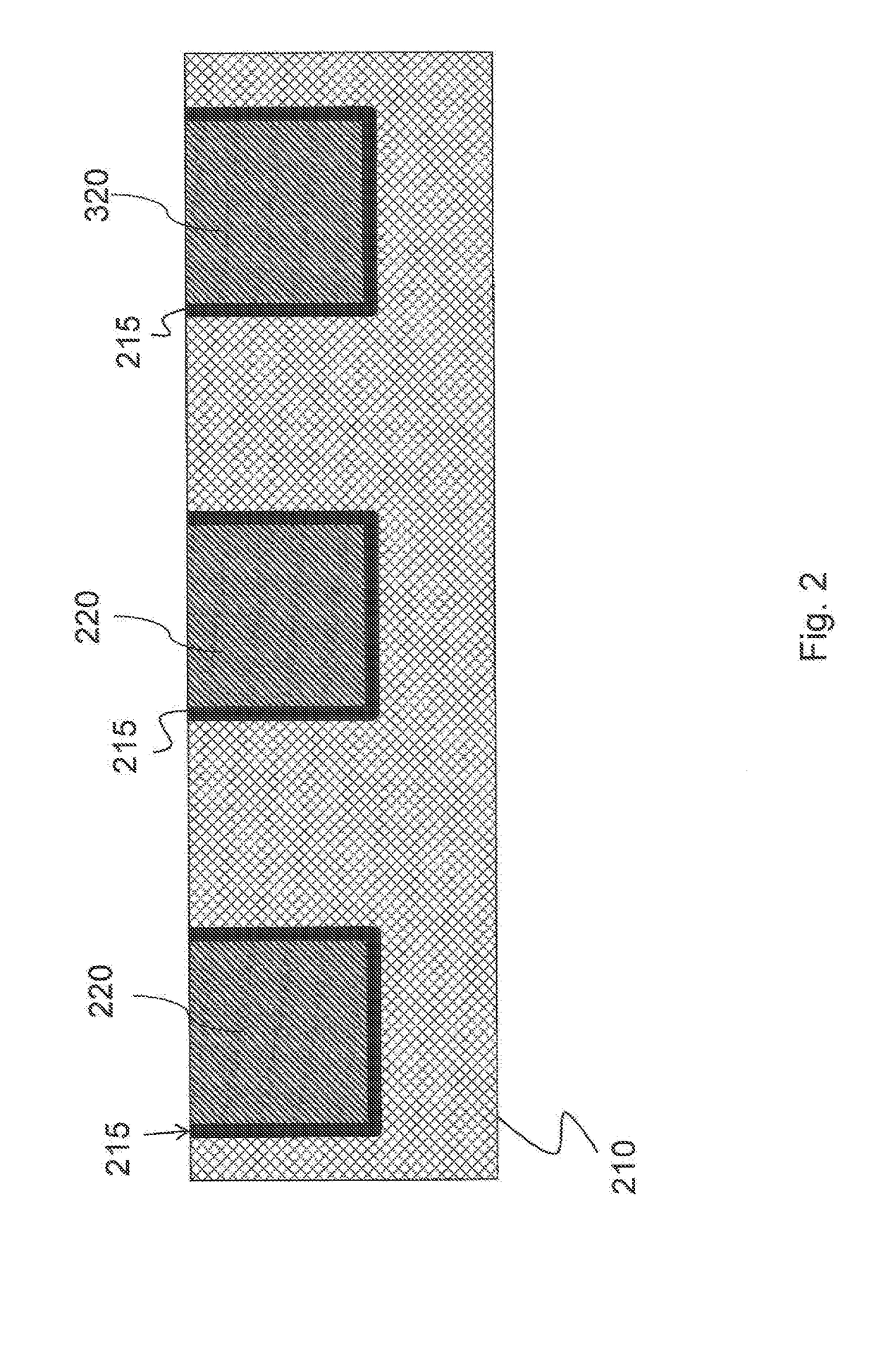Structure and process for metal cap integration
- Summary
- Abstract
- Description
- Claims
- Application Information
AI Technical Summary
Benefits of technology
Problems solved by technology
Method used
Image
Examples
Embodiment Construction
[0013]FIG. 1 schematically illustrates conventional caps for semiconductor structures to compare performance of metal caps and dielectric caps. Structure 110 shows a conventional cap formed of a dielectric layer. The structure includes semiconductor body having a cavity formed therein. The cavity is filled with a conductive material such as copper (Cu). While not shown, the structure may include a barrier (interchangeably, a liner) material interposed between the semiconductor body and the conductive material. Structure 120 illustrates a similar structure having a metal capping layer. Finally, FIG. 1 comparatively illustrates the advantage of having a metal capping layer over the dielectric layer for better EM resistance. In addition, the Cu / metal interface provides better adhesion strength than the Cu / dielectric interface, which results in better EM resistance in the Cu / metal capping layer system.
[0014]FIG. 2 illustrates semiconductor body 210 having three exemplary cavities formed...
PUM
 Login to View More
Login to View More Abstract
Description
Claims
Application Information
 Login to View More
Login to View More - R&D
- Intellectual Property
- Life Sciences
- Materials
- Tech Scout
- Unparalleled Data Quality
- Higher Quality Content
- 60% Fewer Hallucinations
Browse by: Latest US Patents, China's latest patents, Technical Efficacy Thesaurus, Application Domain, Technology Topic, Popular Technical Reports.
© 2025 PatSnap. All rights reserved.Legal|Privacy policy|Modern Slavery Act Transparency Statement|Sitemap|About US| Contact US: help@patsnap.com



